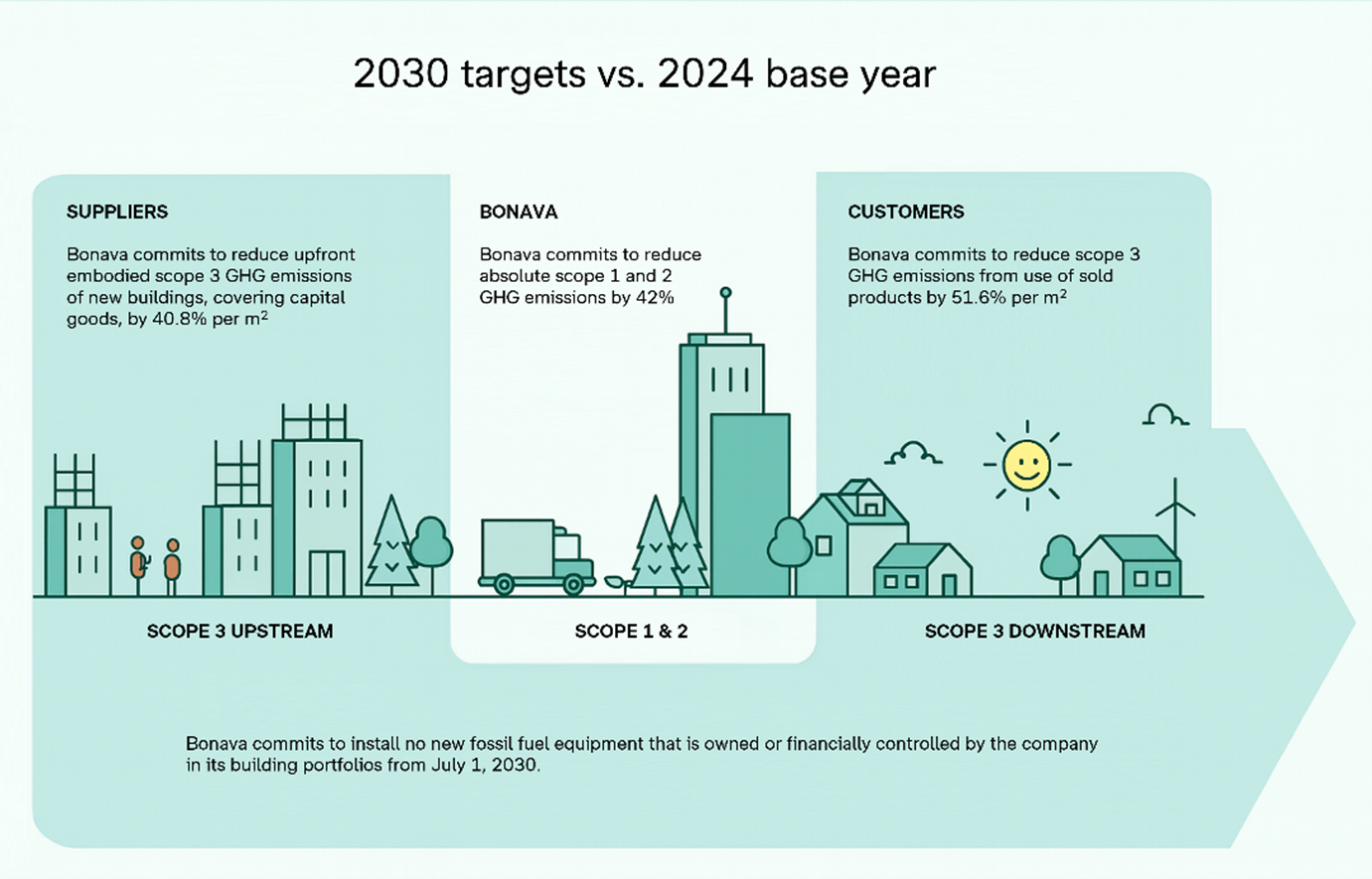Combat climat change
In 2020, Bonava became the first residential developer in Europe to have its near-term climate targets approved by the Science Based Targets initiative (SBTi). The targets were set based on the knowledge and models available at that time. Since then, both scientific research and Bonava’s own analyses have advanced, providing better data and new insights.
Our earlier spend-based method did not capture real emissions or enable visible progress. In 2024, we shifted to project-based lifecycle assessments (LCA), creating a more transparent and meaningful baseline. We can now track climate impact in greater detail – from material choices to the completed home. This enables climate action to be more precise and effective, directing efforts where they have the greatest impact.
Governance
Reduced climate impact in line with our climate targets approved by the SBTi constitutes one of Bonava’s strategic targets.
Scope 1 and 2 (emissions under organizational control)
Our absolute reduction target for Scope 1 and 2 covers 100% of Bonava’s office energy, company vehicles, and land-use change, which together account for ~0.5% of our total footprint. The largest share comes from fossil fuels in our vehicle fleet, making electrification and efficiency improvements the key opportunities for reduction.
Scope 3 upstream
These are indirect emissions from our value chain before and during operations. They include purchased goods and services, capital goods, fuel- and energy-related activities, upstream transportation, waste, business travel, commuting, and leased assets outside Bonava’s control (such as rented offices and vehicles).
Our reduction target for new buildings focuses on embodied emissions from capital goods under construction: materials (LCA stages A1-A3), transport to site (A4), fuel, energy and waste during installation (A5). In our 2024 base year, emissions from new buildings accounted for 52% of Bonava’s total footprint.
Scope 3 downstream
These are indirect emissions after operations, such as the use of sold products, end-of-life treatment, and leased-out premises.
Our reduction target covers the lifetime operational emissions from the homes we deliver (60 years, LCA stage B6). In the 2024 base year, emissions from the use of sold products accounted for 38% of Bonava’s total footprint.

Evaluation
Due to updating our baseline in 2024, progress will not be immediate, but it gives us a stronger foundation for tracking actual reductions.
In 2025-2026, our focus will be on identifying reduction opportunities, testing levers, and developing realistic business unit transition plans. Progress is expected in 2027-2030, when concrete actions and measurable reductions are delivered. This phased approach reflects our commitment to align with best practice, strengthen accountability, and advance with realism, flexibility, and integrity.
As a listed company in the EU, Bonava is in scope of the Corporate Sustainability Reporting Directive (CSRD) and will report in accordance with the European Sustainability Reporting Standards (ESRS) from the financial year 2025, as part of the first wave of companies. This marks a step change in sustainability reporting, with more comprehensive, comparable, and assured disclosures on environmental, social, and governance matters.
